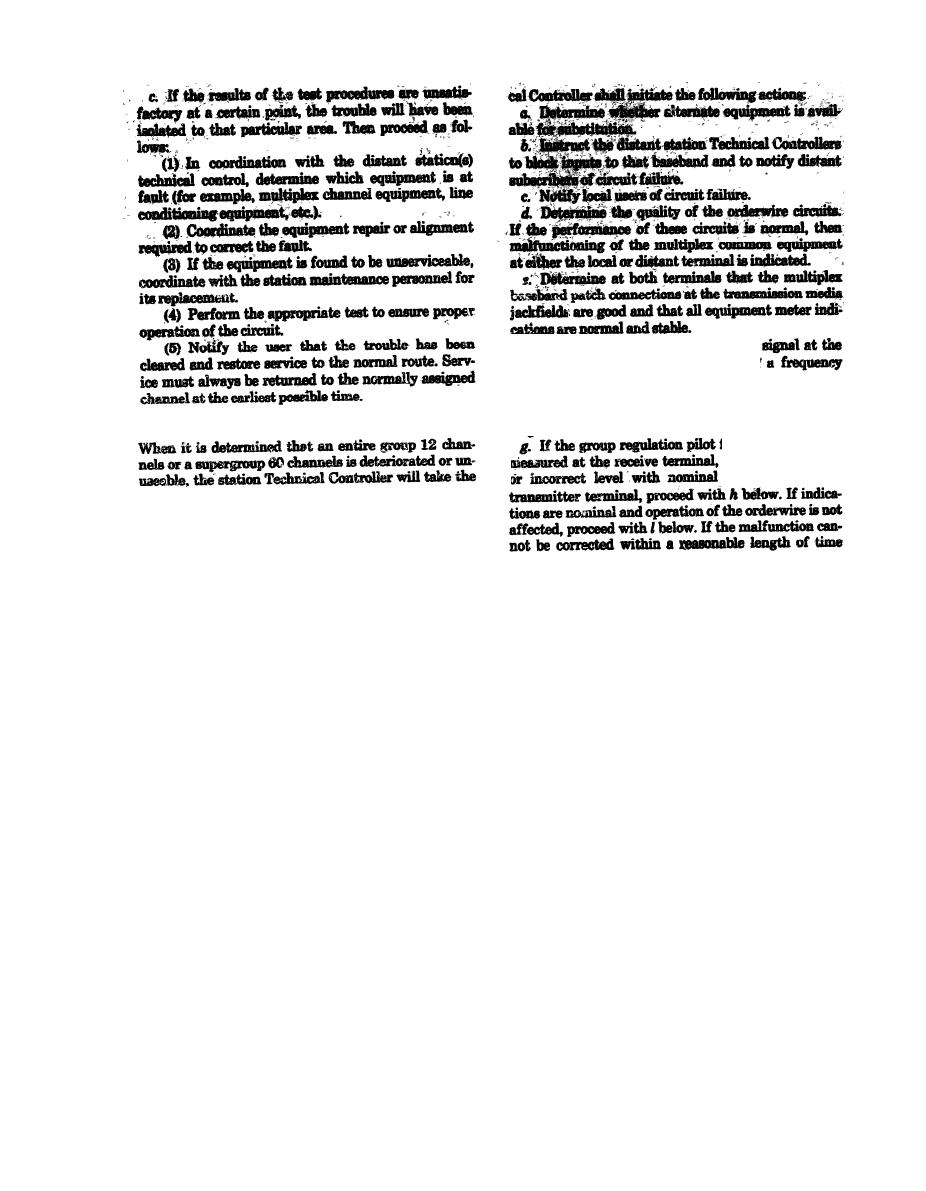 |
|||
|
|
|||
|
|
|||
| ||||||||||
|
|
 TM 11-5895-1012-10
f. Measure the group regulation pilot
transmission media monitor jacks with
selective voltmeter and spectrum analysis at both
terminals. Make certain that the levels are in accord-
ance with appropriate subsystem block and level
diagram and that they are free of noise.
frequency signal, as
is excessively noisy
indications at the
following actions:
a Determine whether alternate equipment is avail-
able for substitution.
b. If none is available, notify the distant station
(i.e., 10 minutes), the Technical Controller should
Technical Controller to block the use of the faulty
notify the appropriate DOCC and request rerouting
channels, and to send test signals on specific channels,
instructions for any priority circuits that may be in-
preferrably on voice frequency channels 1, 6, and 12 of
volved.
the affected group.
h. Connect a frequency selective voltmeter and a
c. Notify local users of circuit failure.
spectrum analyzer to the transmission media baseband
d. Monitor the test signals transmitted by the dis-
monitor jack to test for interference or man-made
tant Technical Control Facility. In conjunction with
noise at the receive terminal. Observe the baseband
station maintenance personnel, coordinate mainte-
signal for noise pulse or interfering signals.
nance necessary to restore the multiplex group or
i. Work with the maintenance personnel as they al-
supergroup equipment to proper transmission stand-
ternately deactivate the individual receive while ob-
ards by alignment, replacement, or repair. If the mal-
serving the baseband signal and multiplex perfor-
function cannot be isolated or corrected within a rea-
mance to determine the frequency sensitivity (inter-
sonable length of time (i.e., 10 minutes), service will be
fering effect) of unwanted signals or to isolate a defec-
restored in accordance with established procedures
tive receiver.
and assigned restoration priorities.
j. Request alternate deactivation of the frequency
e. When the malfunction has been isolated, cor-
diversity transmitters to ensure that unwanted signals
rected, and the circuits checked out, notify the distant
or noise are not caused by the distant end transmit-
Technical Control of the nature of the problem end
ters. Direct maintenance personnel to perform trans-
request removal of test signals. If necessary perform
mitter and common baseband equipment tests to
additional out-of-service testing to ensure that all cir-
verify normal operation.
cuits meet specified parameters.
k. If the fault has not been isolated at t&is point in
f. Restore user service to normal routing.
the test procedure, request deactivation of both trans-
g. Complete station records, trouble reports, log en-
mitters. Monitor the receiver output on the oscillo-
tries, etc., in accordance with established procedures.
scope and the automatic gain control (AGC) meters.
4-32. Baseband Fault
The presence of noise spikes or pulses indicates either
radio interference or local man-made noise. Noise may
When it is determined that the entire transmission
be caused by many things, including defective antenna
media baseband has deteriorated, the station Techi-
|
|
Privacy Statement - Press Release - Copyright Information. - Contact Us |